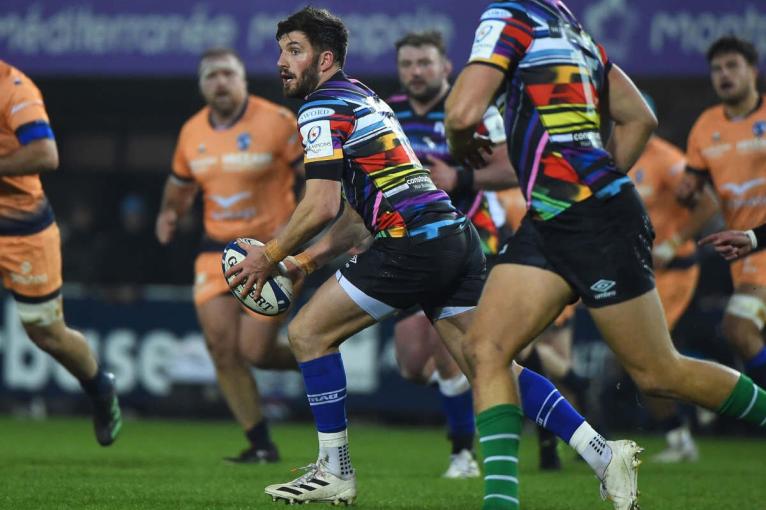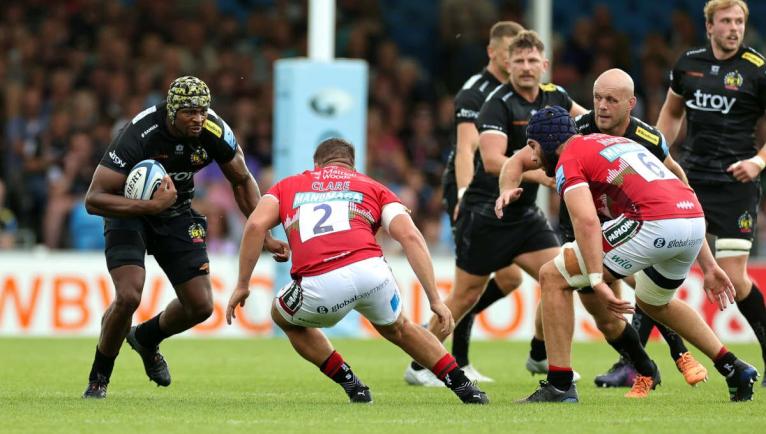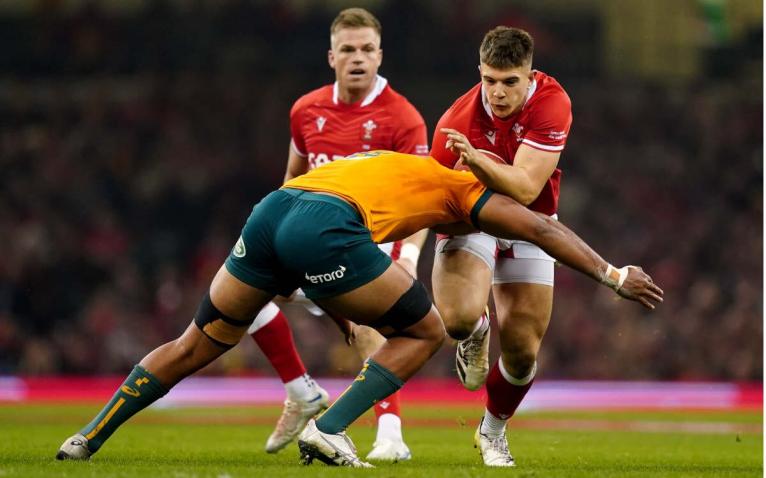After three years of fear, loathing and panic, the announcement of the 37-man Wales squad brought about a feeling many fans thought they’d lost; optimism. The first headed by Warren Gatland, the first in the post-Pivac era, spoke of sunnier climes ahead.
Regardless of how well the squad had performed under Pivac, there were certain players who you suspected Gatland would rate. Nick Tompkins, Gareth Thomas and Kieran Hardy were three bright lights in Wayne’s world, yet this is the first confirmation we’ve had that Gatland was willing to work with them. Tommy Reffell has been superhuman in the Premiership, and it feels inevitable that he’ll be unleashed to rig a few possession percentage stats in favour of the men in red.
The clock is ticking, with Irish fans set to invade Cardiff, where the form book says it should be a rudimentary win, so let’s have a think about some of his most interesting selections, their implications, and speculate on their chance at good game time. Additionally, let’s assess how Gatland may manage these players and integrate them into his own gameplan.
Ken Owens
The Sheriff of Carmarthen and the human epitome of Welshness suddenly feels like the obvious option as Wales captain. Gatland has admitted that Owens probably won’t continue after the World Cup, but he is still clear first-choice, with Dewi Lake set to challenge him once he recovers from an untimely injury picked up against Leicester Tigers. A long-term leader at club level, Owens rarely has a bad game. He is Wales’ most-capped hooker and a talisman to his team.
Prior to his injury on Friday night, Lake was the form hooker in Wales, but one man’s misfortune is another man’s opportunity and Scott Baldwin was a popular recall, to battle it out with Bradley Roberts for the No 16 shirt, with Ryan Elias nursing an Achilles injury.
Looking further ahead, Gatland is evidently a believer in “starters” and “finishers”. It’s a tough one to debate as it feels like punishing a player for playing well, but Lake, whom Gatland name checked at the Six Nations launch, showed in South Africa that he can go toe-to-toe with the best on the international stage. Gatland can entrust his skipper to empty the tank and bring on a young, possible future captain who can power over the gainline and give Wales precious front-foot ball.
Owen Williams
During Williams’ time in the Premiership, he has often prompted suggestions that he deserves a call-up for his “attacking flair”, his versatility or his distribution skills. But since signing for the Ospreys, he has shown an ability to manage games, read defences and execute a gameplan. As such, he is still unbeaten in the Ospreys 10 jersey, including wins away to both the English and French champions.

If Gatland wants to play a heavy kicking game, there is no reason why Williams can’t execute this. He may not be as obvious an option as Dan Biggar, but in the absence of Gareth Anscombe, he’s a great option to frustrate opposition wingers by getting the ball into whichever areas they aren’t marking. He is a mature fly-half playing excellent winning rugby under the guidance of Toby Booth. Between Williams, Biggar and Rhys Patchell, Wales have three intelligent fly-halves who can almost act as on-field coaches and deliver whichever gameplan Gatland wants.
Rhys Davies
Davies feels like the perfect Gatland selection at lock. Sometimes flies under the radar, but matches his 6ft 6in, 114kg frame with a work ethic and coachability. There’s a parallel universe in which Davies is a lock who plays 30 games at regional level and doesn’t get picked up, but the same can be said for so many locks who have flourished under Gatland: Jake Ball, Adam Beard, Bradley Davies and Cory Hill.
Gatland has never wanted a second row forward who makes eye-catching carries. The most valuable assets in a Gatland boiler room are line-out skills, ruck efficiency and maul defence. Davies has shown potential to deliver these in spades, and an ability to fast-track “potential” into “genuine international ability” with a few weeks coaching. Aside from Adam Beard and Alun-Wyn Jones, the selections in the row have one cap between them; so don’t be surprised if Gatland sticks Davies, who has also featured at 6, on the bench and views him as a genuine second choice option.
Christ Tshiunza
Aged only 21, it’s difficult to figure out Tshiunza’s current standing at international level. Wales aren’t short on good flankers, but they’re in no position to turn down a 6ft 6in back-five hybrid – let alone one who has learned from Jonny Hill, Jonny Gray and Sam Simmonds in seasons gone by.
Tshiunza has been raised in a pack who love to score tries and grind out games the hard way. Gatland will love that. The Exeter man may not push for a starting shirt just yet, but there’s certainly a temptation to go for a 6-2 split and put him on the bench. He’s young, fit, 112kg and smart in contact. The thought of bringing him on in the 60th minute alongside one of Justin Tipuric, Tommy Reffell or Jac Morgan is terrifying.

In the 2013 Lions series, Gatland picked Tom Croft – a fleet-footed, abrasive flanker in the 19 jersey, as a reserve lock. Come the World Cup, Tshiunza’s versatility could make him irresistible to pick in the first 23 regardless of how Gatland splits his bench. If he gets a chance in this campaign, it could well be an audition for the biggest games on the calendar.
Kieran Hardy
Gatland has stated that he has picked his three scrum-halves on their kicking ability, and rightfully so. If you pick out virtually any big win in the Pivac era, Hardy’s kicking game will have been one of Wales’ strongest attributes. In a Welsh system that was way too reliant on linebreaks magically landing on their lap, it was nice to have a nine who was more realistic with the areas of the park he wanted to play in.
During Wales’ 2018-19 campaigns under Gatland – including their longest-ever win streak – Wales kicked the ball lots and didn’t mess about in their own half. It’s no surprise Gatland has warmed to a scrum-half willing to kick as much as Hardy, and it will hopefully pay dividends. Gatland will hope for Wales to be patient, strong on kick-chase and able to win important turnovers further up the field.
Joe Hawkins
As the sun went down on the original Gatland era, his 12 was Hadleigh Parkes. A durable 12 whose main selling point was his ability to carry hard, distribute and execute a variety of kicks. Nick Tompkins hasn’t done anything wrong, and is defensively sound – but there’s a new contender for the Wales 12 jersey.
In Hawkins’ first cap against Australia, he showed that he can single-handedly transform Wales’ attack. He soared into the midfield with the confidence of a 30-cap fly-half, controlling everything from the boot (the space behind a pod of forwards) and provided Wales an extra passing option. Jac Morgan made a multitude of breaks against the Wallabies purely because of the threat of Hawkins in the boot giving Morgan weak shoulders to attack on tip-on lines.

Under Pivac, Wales played a 1-3-2-2 structure. It will be interesting to see how they will spread their forwards in the new Gatland era, but having Hawkins control everything from the back is bound to stretch opposition defences and loosen gaps for the likes of Morgan, Alun Wyn Jones and Justin Tipuric.


Comments
Join free and tell us what you really think!
Sign up for free